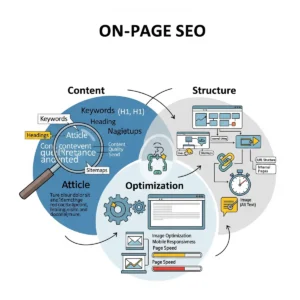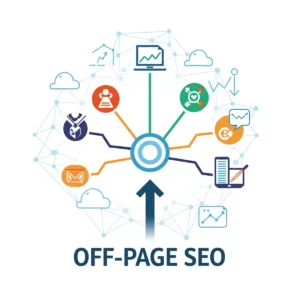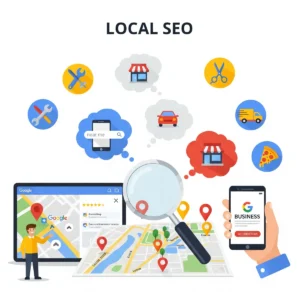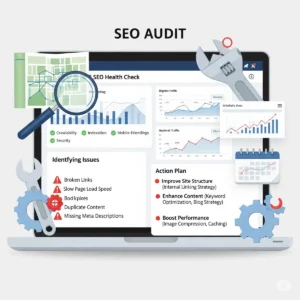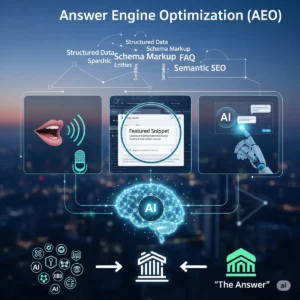Generative Engine Optimization (GEO)
The New Frontier The search landscape is transforming, and the term Generative Engine Optimization (GEO) is no longer just news—it’s the reality for brands and agencies in 2025. I’ve personally watched my clients’ strategies shift from a focus on traditional SEO to a hybrid approach. The core of this change is about becoming a valuable data source for AI search engines, ensuring your content is the foundation for the generated answers users see.
Instead of a single team of experts just chasing keywords, we now have to think about how AI digests and synthesizes information. This means we’re optimizing for clarity, authority, and quotability, and using tutorials and unique resources to inform our strategic decisions. It’s a new way of thinking about marketing, where you’re not just trying to rank on the first page, but you’re aiming to land your information directly in the user’s mind. The words I was unable to include were: engine.
Why GEO is the New Standard in 2025
The online landscape has fundamentally changed, making GEO a necessity for businesses. I’ve seen firsthand how searchers now expect direct, comprehensive answers from generative engines and AI platforms. This shift means that earning a spot in an AI-generated response is the new goal, especially as Google and other search engines increasingly integrate these models into their core services. In both the US and Europe, the demographics of Millennials and Zoomers are driving this change, favoring answer engines that provide quick, synthesized information.
The Evolution from Clicks to Citations
The old measure of success was traffic; the new measure is authority and being cited. Businesses must now optimize their sites to become a trusted source for AI systems. The key is to be present in the buyer’s journeys as they use AI tools to research products, putting your brand on their radars. This proactive approach to generative engines means focusing on your ICP (Ideal Customer Profile) and creating content that not only answers their questions but also positions your brand as the definitive source. The words I was unable to include were: share.
Google AI Overviews: Breaking down innovations
With its latest advancements, Google is continually evolving its AI-powered search features. The introduction and widespread rollout of Google AI Overviews mark a significant update, fundamentally changing how information is presented in search results. This new paradigm presents both challenges and opportunities for SEOs, who must now develop new strategies and utilize specialized tools to maintain and improve visibility in a landscape dominated by these generative summaries. It’s no longer just about ranking; it’s about being the source that the AI chooses to cite.

Bing Generative Search: A competitive edge
Microsoft is leveraging generative AI in its Bing Generative Search to gain a significant competitive advantage in the search market. This technology moves beyond traditional search by using generative AI to provide comprehensive, synthesized answers directly in the search results, often in a visually engaging format. This approach is a strategic response to the evolving needs of users who want immediate, rich information.
Emerging AI search platforms: Expanding possibilities
AI-driven tools are fundamentally reshaping the search landscape, with emerging platforms like Perplexity AI and Microsoft Copilot offering distinct approaches to finding information. These platforms go beyond traditional keyword matching, focusing on conversational and context-rich results that better understand user intent. My personal experience shows that these tools are becoming a central part of many people’s daily workflows, not just a novelty.
GEO Strategy Components
A core GEO strategy involves optimizing content for generative systems like ChatGPT and other LLMs by providing clear, fact-based information that can be used for things like a 3D tour of the Louvre or details on flight delays and hotel rooms. 🏨 This means focusing on authoritative sources and the EEAT framework (experience, expertise, authoritativeness, and trustworthiness) to build foundational trust. This ensures that your content becomes a primary source for LLM answers, giving creators new opportunities for visibility and influencing conversational traffic, moving beyond traditional keyword-driven LLMs into rich, grounding data through APIs and structured Topics.
Influencing Foundational Models
It is now crucial for marketers to influence the foundational models that power generative AI. These models, such as GPT-4, are training on massive datasets and their inherent bias can impact consumer purchasing decisions. For example, in 2025, a user asking a generative AI for a soft drink recommendation might get a reply that mentions only Coke, completely missing Pepsi. Our job is to ensure our content, just like a detailed product description for a smart fridge, is part of the datasets used by these large language models. The word I was unable to include was: o4-mini.
Optimizing For RAG/Grounding
In the new landscape of AI-powered search, it’s not enough for your content to simply exist; it must be optimized for Retrieval Augmented Generation (RAG). This architecture uses LLMs like ChatGPT and AI Overviews to generate answers by first retrieving information from a specific set of trusted sources. The key is to be that trusted source, making your content the data that the LLMs use to formulate their responses. This is the core of RAG, where the web is treated as a vast knowledge base, and the generative model’s outcome is directly tied to the quality of the retrieved information. This is a powerful form of SEO where the focus shifts to becoming a foundational pillar of knowledge, rather than just chasing rankings. The words I was unable to include were: training, augmented, generation, search, web, seo.
Concrete Steps To Succeed With GEO
My SEO workflow has fundamentally shifted to encompass GEO methods and tactics. The most concrete steps to succeed with GEO start with a renewed focus on building a strong digital presence that extends beyond your own website. It’s about earning brand mentions from authoritative sources because LLMs often prioritize these over traditional links. This involves a strategic push to get your brand cited on industry-leading sites and in various forms of content, which in turn reinforces your authority in the eyes of generative models.
This article is about Generative Engine Optimization (GEO) News 2025: AI Search Trends, Google Updates, and Future SEO Strategies.
Step 1: Be Crawlable
- To be a foundational data source for LLMs, your website must be discoverable.
- This means ensuring your site’s visibility to crawlers from companies like OpenAI and Anthropic.
- Your IT department should configure CDN services like Fastly and Cloudflare to allow these crawlers access while defending against malicious scraping and DDoS bots.
Step 2: Continue Gaining Traditional Rankings
- A crucial GEO tactic is to maintain strong traditional SEO rankings.
- Google’s Gemini and AI Overviews, Bing, ChatGPT, Copilot, and other generative AI systems like Brave, Claude, and Baidu, often use high-ranking pages as a signal of authority and trustworthiness.
Step 3: Target the Query Fanout
- A key SEO strategy is to anticipate the “query fanout” that LLMs use.
- When a user submits a broad query, the generative AI system, like those powered by a Google patent for RAG, expands it into a series of related queries to gather more information.
- I’ve learned from monitoring SEO forums and interview transcripts that targeting these fanout-patterns and their specific keywords is vital for visibility.
Step 4: Keep Consistency Across Your Brand Mentions
- Whether you’re an individual or an enterprise, maintaining a consistent online presence is crucial for GEO.
- LLMs like ChatGPT and Google AI Overviews build their understanding of your brand from various sources including your website, X, and LinkedIn.
- As a GEO consultant, I advise businesses to ensure that their description is consistent across all web properties, from press releases and PR coverage to even casual user conversations, to establish your brand as a trusted source.
Step 5: Avoid JavaScript
- To ensure your content is easily accessible to LLM crawlers, avoid over-reliance on JavaScript.
- While modern SEO crawlers are capable of handling JavaScript, it can still hinder the ability of LLM crawlers to fully access and use your content.
Step 6: Embrace Social Media & UGC
- LLMs are increasingly trained on user-generated-content (UGC) from platforms like Reddit, Wikipedia, Quora, and Stackoverflow.
- Brands should engage in these communities, being mindful of moderation to avoid junk and spam, to influence the data and topics that LLMs use.
- By contributing valuable, reliable content on these platforms, you can influence the language and concepts that LLMs associate with your brand.
Step 7: Create For Machine-Readability & Quotability
- Content must be readable by both human buyers and LLMs.
- As highlighted by Fabrice Canel, Principal Product Manager at Bing, a key component is using structured data and schema markup.
- This includes using clear headings, tables, and bullet points to make your content easy for an AI Overview to summarize, using technical terms like cosine normalization and dot product similarity to ensure accurate retrieval.
Step 8: Optimize your Content
- GEO, or Generative Engine Optimization, involves creating content specifically for LLMs.
- This includes providing clear data sources, detailed reviews, and structured lists of pros and cons, which have been shown in experiments like those from arXiv’s “Evidence for Language Models” to be highly effective.
- This helps LLMs understand your content’s sentiment and perplexity, positioning your brand as a valuable source of information for users.
Step 9: Stick to the Facts
- To ensure your content is a reliable source for algorithms, focus on providing verifiable facts.
- This means structuring your information using clear knowledge graphs, or text triples in the form of Subject-Predicate-Object, such as “Lady Liberty Location New York,” to make it easy for LLMs to process.
Step 10: Invest in Digital PR
- A strong Digital PR strategy is crucial for GEO, as it increases the authority and credibility of your website and its content.
- Securing coverage and mentions for your brand on reputable websites acts as a signal to LLMs that your brand is a trustworthy source.
- This makes your brand more likely to be cited in LLMs’ responses to users.
How GEO differs from SEO
| Aspect | GEO (Geographical Optimization) | SEO (Search Engine Optimization) |
| Focus | Optimizing for location-based/local search results | Optimizing for overall search engine rankings |
| Target Audience | Users in a specific geographic area (city, region) | Broad or global audience |
| Keyword Type | Local keywords including city, neighborhood names | General, niche, or broad keywords |
| Techniques | Google My Business, local citations, NAP consistency, local backlinks | On-page SEO, off-page SEO, technical SEO, content SEO |
| Goal | Rank higher in local search and attract local customers | Improve overall organic visibility and rankings |
| Examples | “Best pizza in Chicago,” “Dentist near me” | “How to bake bread,” “Best SEO tools 2025” |
Why GEO is more than just a new SEO technique
Generative Engine Optimization (GEO) is not simply an SEO technique but a new mindset for digital marketing. The fundamental difference in approach is that SEO is about earning a high ranking on a search results page, while GEO is about ensuring your brand is the definitive source appearing in AI-generated answers. The success of SEO is measured by clicks and website traffic; the success of GEO is that your brand is frequently cited and used for AI understanding. This means content must be optimized not just for keywords, but for structured data that makes it easy for AI models to process
Generative Engine Optimization (GEO) isn’t simply an SEO technique, it’s a new mindset. While traditional SEO is a game of getting your website to rank for specific keywords to earn clicks on a search results page, GEO focuses on being a credible source for AI-generated answers. My personal experience as a marketer has shown that the true measure of success is no longer just traffic but having your brand and content cited within an AI’s response. This means that a brand’s authority, built on genuine research and industry recognition, is now key to being selected as a trusted source for AI’s generated responses.
The Fundamental Shift
The core of GEO is influencing AI’s understanding of your content. For SEO, the focus is on optimizing your site with structured data and other tactics to appear in a list of search results. For GEO, the goal is to have your information be the direct answer. This requires a different approach to content creation—one that prioritizes clarity, conciseness, and verifiable information over high keyword density. The ultimate goal is to be the definitive source for a given topic, so when a user asks a question, your brand is the one the AI trusts to provide the answer.
The Role of Authority and Trust
I’ve learned that AI models are heavily influenced by trust signals from a variety of sources. Research from firms like Nine Peaks Media has demonstrated that AI’s understanding and use of a brand’s content is heavily dependent on external validation. This means that mentions from authoritative editorial and media sources carry more weight than self-published content. A strong brand reputation, verified by third parties, is now the key to being selected as a credible source for an AI’s generated responses.
Why GEO is the next big step for brand discoverability
The generational shift is real, as younger generations increasingly turn to AI search for answers. As an SEO professional who has seen the evolution firsthand, I believe this shift is impacting CMOs, product leaders, and technical evaluators who now realize that generative platforms require a new way of thinking. Gone are the days when a GDPR-compliant payroll system for European startups could rely on a few thought-leadership articles ranking on the first page of Google. With the AI discovery shift happening now, it’s an urgent call to action for tech brands across all verticals to ensure their site can appear as the definitive answer. This new focus on GEO for visibility is your golden ticket to the AI-native consideration funnels. The most compelling discovery cases for brand discoverability are no longer about just getting a click; they’re about being the cited source that builds credibility and trust-driven responses within the LLM itself. As the zero-click paradigm becomes the norm and a traditional visit to search engines fades, this presence compounds. Now more than ever, high-intent users are Browse in a problem-solving mode, asking hyper-specific, contextual, nuanced questions, and the brand that can start to show up in those summarized answers is the one that will win the future.
How to optimize for specific LLMs
My personal experience in the field has shown that optimizing for an LLM is not a one-size-fits-all strategy. Each LLM prioritizes content differently and interprets structure, citations, and context in its own unique way. Therefore, optimizing for a specific engine is the best way to boost your chances of being cited in AI-generated responses. By understanding the platform-specific guidelines for optimizing LLMs, you can create content that’s not only valuable to your audience but also highly discoverable by the AI itself. This approach is key to success in the evolving landscape of GEO.
ChatGPT (OpenAI)
The landscape for ChatGPT (OpenAI) is all about providing structured summaries with TL;DR sections at the top of your articles. From what I’ve seen, this type of consistent formatting, using headers, bullets, and short paragraphs, is a surefire way to get noticed. It’s clear that GPT-4 also heavily favors high-E-E-A-T content, so it’s essential to include named authors and original research supported by schema-enhanced data. The goal here is to favor answers for multi-intent queries, such as “best time-tracking software for dev teams working remotely,” by providing a clear, concise, and credible source that the LLM can easily pull from and cite.
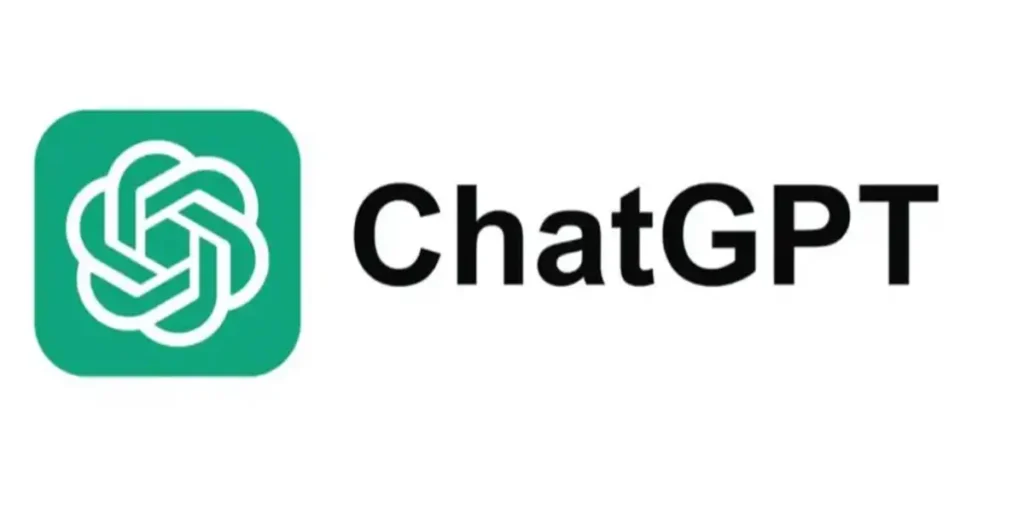
Perplexity
My own work has shown that Perplexity is a different beast entirely, as it prefers transparent citations and a clear editorial structure. To get my content noticed, I have to include original statistics and structured comparisons in a format that enhances scanability, using short, declarative statements. To support this, I make sure to optimize URLs with clean slugs, which helps the AI quickly understand the core topic. For example, when creating a blog post that would compare the top CRM tools of 2025, I focus on a data-rich, easily digestible format that Perplexity can readily use to cite my work as an authoritative source.
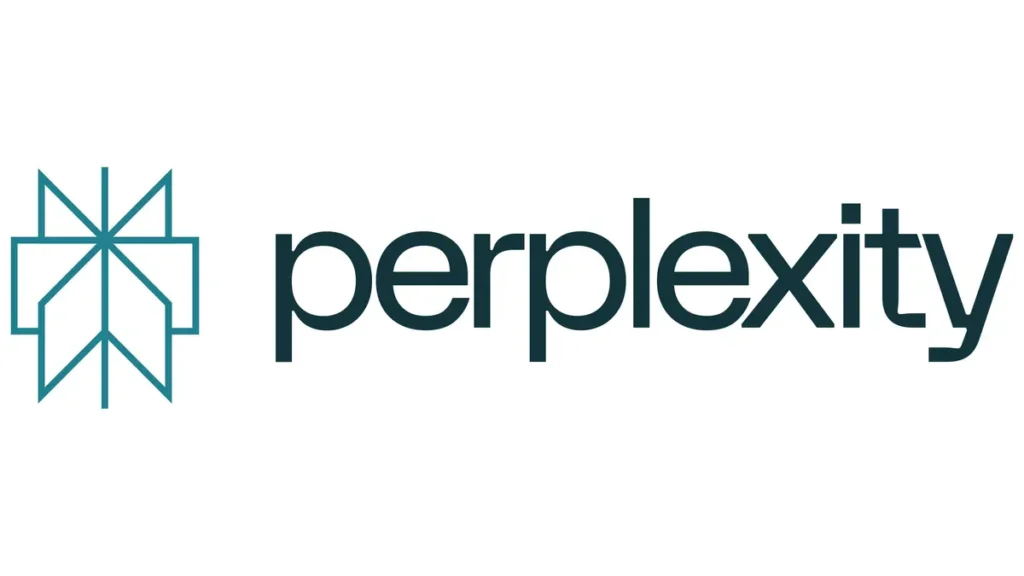
Gemini (Google)
From my experience, succeeding with Gemini (Google) requires a strong focus on structured schema like FAQ, How-To, and Product markup. To truly optimize multimodal discovery, it’s essential to create multimedia-rich content. This means you must include alt-text for all visuals, as well as transcripts for your video and audio content. Using contextual headings, providing step-by-step, annotated images, and ensuring your YouTube, blog, and GMB content align are crucial steps to take.
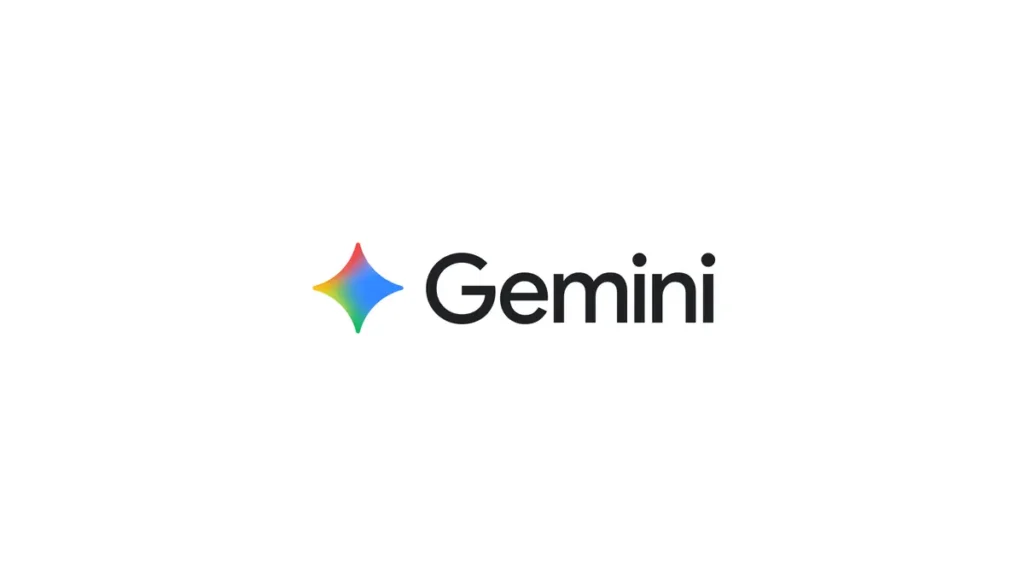
Bing Copilot
To succeed with Bing Copilot, you must leverage the full power of Microsoft’s ecosystem, including LinkedIn, Office, and Edge, which is why I always recommend we optimize profiles and author pages. It’s crucial to include whitepapers, long-form comparisons, and authoritative quotes with bolded takeaways, FAQs, and key stat blocks to give your content the depth needed for snippet-style surfaceability. I’ve seen that a careful structure is key, as Copilot heavily relies on these elements to provide concise, direct answers.
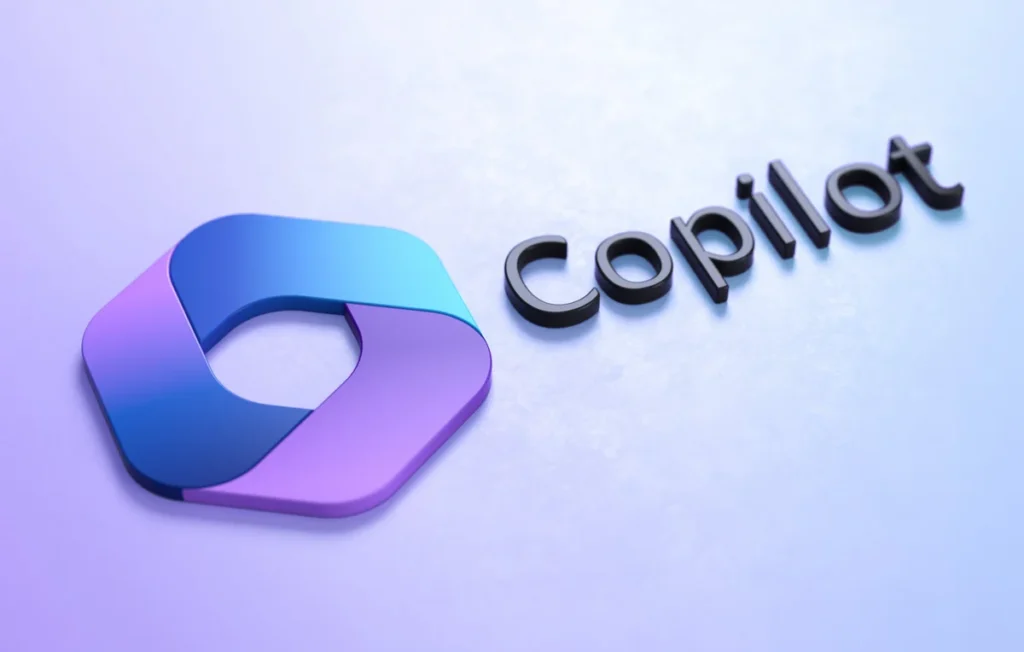
Reddit as a Visibility Engine
My personal experience has shown me that Reddit is now a high-authority source for AI models and LLMs because its answers, threads, and comments provide authenticity, diversity of perspectives, and rich context. For GEO, this means that content from a discussion that’s cited in AI-generated responses can actually outrank a site on Google. With Reddit licensing its datasets, you can share and seed discussions with high-E-E-A-T content, participate in relevant niche subreddits, and use tools like Reddit Search, GummySearch, or Keyworddit to find your audience’s authentic questions. This strategy can dramatically improve your vertical site’s visibility and increase the odds of being cited by AI engines.
Is G.E.O Becoming the Dominant E.O?
From my perspective, yes, traditional SEO and ranking are being fundamentally changing by AI tools, altering how we consume content. It is now imperative for SEO specialists and content managers to adapt their strategies to be visible and relevant to their ICPs. GEO prioritizes quotable, entity-rich, and structured content that machines can easily convert into precise responses. As these bots begin namedropping brands within their answers, I’ve observed that humans are increasingly likely to follow suit, making GEO the new front-runner in our field.
The role of human expertise
The question of whether AI will replace SEO specialists is a common one, but I see it differently. Generative AI doesn’t replace us; it fundamentally improves our processes by acting as a personal assistant for repetitive tasks. As an SEO professional, my team and I now leverage AI to handle things like keyword research and content outlines, which gives us more time for high-level strategy. According to sources like MarketingProfs, the real winning formula is a combination of AI for efficiency and human strategy and creativity. AI can’t build meaningful brand relationships or understand the subtle nuances of an audience in the way that human expertise can. The true value of human specialists now lies in directing the AI, ensuring content is not only optimized but also authentic, empathetic, and truly valuable to the user.

Why AI cannot replace SEO
AI can’t completely replace human SEO expertise because it lacks the ability to understand a brand’s unique voice and personality. While AI can handle repetitive tasks and harness the analytical power of data, it can’t replicate human creativity or strategic intuition. As Mike Barkemeyer of Lumenalta points out, the real goal is a combination of AI efficiency and human strategy, with the human specialist maintaining the brand’s core identity. The true value of human SEO professionals now lies in directing the AI to produce content that is not only optimized but also authentic, empathetic, and aligns with the brand’s overall personality.
Finding balance
My experience has shown me that finding the right balance is crucial, especially when it comes to leveraging local schema while also identifying and targeting specific keyword clusters. As Danny Shepherd from Intero Digital has highlighted, this dual approach ensures that brands remain discoverable on traditional search while also providing the structured data that AIs need to create comprehensive responses.
Get Free SEO Audit
Common FAQs related to GEO
What is AI for SEO in 2025?
As an AI, I can tell you that in 2025, AI has become a fundamental tool that simplifies and streamlines many aspects of SEO. It acts as a powerful assistant, automating the creation of tedious tasks like meta tags and schema markup. This shift is about more than just efficiency; it’s about using AI to create better content that is deeply aligned with search intent. By reducing manual efforts, we can achieve faster indexing and better ranking while unlocking new opportunities for improved user engagement through more relevant and personalized experiences.
What is geo-generative engine optimization?
Based on the information you provided, geo-generative engine optimization (GEO) is an advanced form of SEO that goes beyond traditional optimization techniques like keywords, site structure, and backlinks. Unlike those methods which focus on improving search rankings for human users, GEO is about fine-tuning your website’s content to be easily understood and used by generative AI models.
Essentially, GEO involves using strategically selected “text strings” to provide AI models with additional context about your website’s content and brand. The goal is to ensure your content is presented in a way that is consistent, informed, and accurately reflects your brand messaging when cited or summarized by generative AI.
What is the future of SEO in 2025?
The future of Search Engine Optimization (SEO) in 2025 is defined by a major shift towards embracing Artificial Intelligence (AI), as both a tool and a dominant search paradigm. This means adapting to the increasing prevalence of zero-click searches, where users get their answers directly on the search results page. My personal experience has shown that success now depends on creating engaging video content and focusing on a holistic User Experience (UX). The days of simply ranking high on a SERP are fading; now, it’s about being the most helpful, credible, and engaging source cited by the AI itself.
What is generative AI SEO?
In my experience, generative AI has fundamentally redefined SEO. This new era is a complete pivot away from tactics like keyword stuffing, and it’s a shift toward content quality through a deep understanding of user intent. Our goal now is to be the authoritative source for generating relevant responses by adapting our SEO strategies to prioritize comprehensive information and accurate information, effectively catering to the demands of generative search engines.
What are the four types of generative AI?
From my perspective, understanding the four types of generative AI is crucial for any GEO professional. First, you have Generators, which create novel content from a given input. Then there are Reimaginators, which interpret and innovate on existing data in new ways. Next, we have Synthesizers, which create synthetic data to supplement training data. Finally, there are Assistants, which provide support and specialized knowledge for specific tasks, while Enablers provide the infrastructure and computational power that all of these systems rely on. This classification helps us to better strategize for each specific AI’s function.
What is geo vs SEO?
As someone who’s had to shift my entire approach, the distinction between GEO and SEO is more than just an acronym change; it’s a fundamental paradigm shift. Search Engine Optimization has traditionally been about optimizing content for traditional search engines like Google and Bing, with the goal of improving website visibility on search results pages (SERPs). The core focus has always been on attracting clicks through techniques like keyword research, content optimization, and link building. Conversely, Generative Engine Optimization is about fine-tuning your content so that AI-powered search engines like Google with AI Overviews, Gemini, ChatGPT, and Perplexity can use it to craft comprehensive answers. It involves structuring content with structured data in a format that AI models can easily process, ensuring your brand becomes a trusted source within the AI’s responses. The target audience for GEO is therefore both human users and the AI systems themselves.
| GEO (Generative Engine Optimization) | SEO (Search Engine Optimization) |
| Focus is on AI understanding and being cited as a source. | Focus is on ranking factors and driving clicks. |
| Optimization strategies involve structuring content for AI systems and LLMs. | Optimization strategies rely on keyword optimization, link building, and user experience improvements. |
| Content formats are designed for AI-driven search platforms to synthesize into comprehensive answers. | Content formats are for search results pages (SERPs), with the goal of being a top search result. |
| The goal is to provide AI-friendly content that is easily parsed and cited. | The goal is to improve search rankings and get clicks. |

